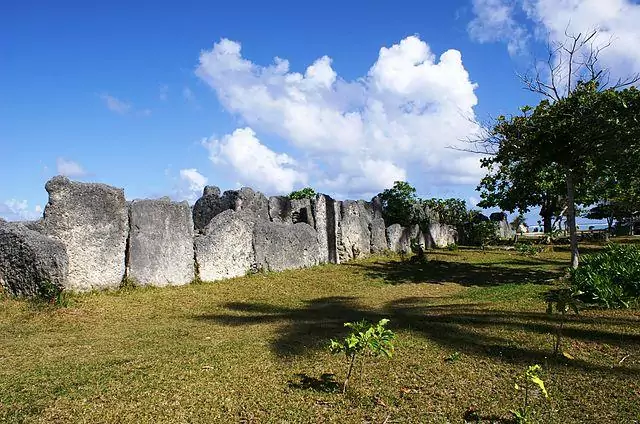
In stark contrast to Tahiti or Bora-Bora, the French-Polynesian island of Huahine enjoys off beat vibes coupled with relative affordability. Tucked away on the atoll’s southern tip, Marae Anini is a vestige of the region’s pre-Christian era. The shrine’s dilapidated walls lie silently on one of the island’s least visited beaches, hiding its gruesome past as an altar where humans were once sacrificed.
Spread all across French Polynesia and the South Pacific, maraes are a sacred rectangular complex, where multiple types of rites and communal meetings have taken place prior to the arrival of Christianity. Fashioned from either rocks or corals, each marae is dedicated to a specific Polynesian deity, and as such is often surrounded by tamanu or banyan trees, which according to a local belief, ward off bad spirits. Following the French colonization and the subsequent Christianization of the islands, most if not all maraes were ultimately abandoned, lying as an inanimate relic to the rich indigenous heritage.
Ensconced in the southernmost point of Huahine Iti, one of Huahine Atoll’s constituent islands, Marae Anini might seem at first like an innocent pile of rocks. However, this abandoned marae holds a horrifying secret, as according to locals, it once served as a sanctum where human beings were sacrificed as part of a religious ritual.
Constructed at the end of the 18th century, the Marae Anini was the brainchild of Ta’aroari’I, the son of the then king of Huahine, Mahine. Ta’aroari’I, who wanted to revive the local traditions against his father’s will, dedicated the shrine for Hiro, the god of seamen and bandits, and ‘Oro, the god of war, the latter of whom apparently had a big appetite for human flesh. While this claim was never fully verified, several sources including the shrine’s last priest firmly asserted that at least 14 people were sacrificed as offerings to the almighty deity.
Made almost entirely of coral stones, the sacred site was restored in 1969. Thankfully, unfortunate people no longer have to pay the ultimate price to appease any divine entity, as those were recently replaced by sunbathers and swimmers who frequent the nearby Anini Beach, renowned for its shallow turquoise water.

A smattering of coral stones serves as a silent testament for the place's dreadful past
photography by: DANIEL JULIE/ Wikimedia Commons